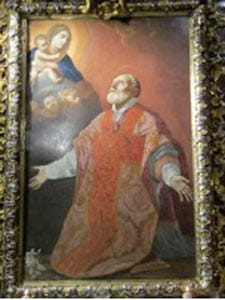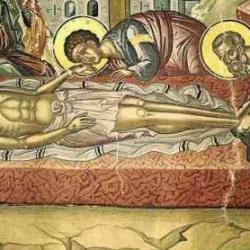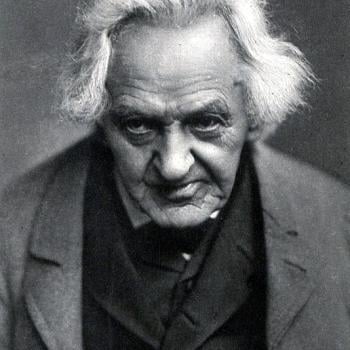 In honor of St. Philip Neri's feast day here's a quick riddle:
In honor of St. Philip Neri's feast day here's a quick riddle:
Question: How do you get holy water?
Answer: Boil the hell out of it!
Okay, tell me that didn't bring a little smile to your face? (Or, if not, humor me. Some days you've just got to find joy wherever you can!)
Today the Catholic Church honors St. Philip Neri who lived in Rome during the 16th century. Known as a humorist and a jokester, St. Philip's unbounded cheerfulness was legendary.
I know I need a good dose of joy on any given day. Having a fairly serious temperament as a first-born, my seventh grade homeroom teacher was fond of calling me out by saying: "You'll catch more flies with honey than with vinegar, Missy." Even back then, I was pretty sure the Good Lord gave me my two younger sisters, and later, my own three children so I could learn to lighten up and be of good cheer. Their childlike antics and charm often got me smiling.
St. Philip Neri's wisdom was rooted in the delight he took in being a Child of God. Such a life was worthy of celebration and joy! Philip's witness reminds me that a sad saint really is a sad saint. In other words, if God loves you and you know it, kindly inform your face!
St. Philip knew that, over time, the Christian needs to cultivate an attitude that was worthy of the long road to heaven:
Cheerfulness strengthens the heart and makes us persevere in a good life. Therefore, the servant of God ought always to be in good spirits.
Did you ever meet someone whose laughter and love was contagious? This was St. Philip.
As I studied his life, I learned the secret to his joyous and fun reputation: an intimate relationship with Jesus whom he addressed repeatedly and spontaneously with childlike confidence in the One who could supply all.
"Jesus, be a Jesus to me."
"I cannot love you unless you help me, my Jesus."
"My Jesus, if you want me, cut the fetters that keep me from you."
As a young layman, Philip was searching for the higher things in life, drawn to a hermit's lifestyle even as he lived and worked in the city. He found his peace in prayer and silence. He developed a deep love for Jesus, especially in the Eucharist. He was ardent about the efficacy of frequent confession, for it was the meeting place between Jesus' mercy and the heart of men.
This love wooed Philip to seek quiet places—whether remote country chapels or his rooftop loggia where he could scan the horizon and see the city laid out before him—escaping the noise of life to converse with his Lord in private.
The catacombs of St. Sebastian were one of Philip's favorite places for prayer. It was there that, around age 29, Philip experienced a kind of personal Pentecost—a divine encounter with the Holy Spirit that proved to be the source of the fire of joy that ignited the rest of his life. His biographers reveal that this episode was little known about Philip until after his death.
[Antonio] Gallonio, his first biographer tells us: "It was habitual with Philip to pray each day to the Holy Spirit, and with great humility to ask Him for His gifts and graces." As he was thus praying again with great devotion in 1544, "he suddenly felt himself divinely filled with the power of the Spirit with such force that his heart began to palpitate within his body and to be inflamed with such love that, his nature being unaccustomed to such a palpitation of the heart, he indicated that he was completely unable to bear it."
According to the testimony of Pietro Consolini, a special confidante of Philip's last years, Philip saw a ball of fire enter into his mouth and then felt his breast expand over his heart. The sensation of inner fire was so strong that Philip threw himself onto the ground and cried out, "Enough, Lord, enough! I cannot take anymore!" . . .
This experience of God's love gave Philip an unbounded joy, "a gladness of divine love." (Paul Türks of the Oratory, Philip Neri, The Fire of Joy, Alba House, 1995, pp. 16-17; translation by Daniel Utrecht)
This interior flame compelled Philip to share this love with other people. His heart burned to serve others, and so, while still taking opportunities for daily silence, Philip forsook the solitary life. He called it "Leaving Christ, for Christ's sake," a movement from prayer to good works, ora et labora. He was ordained a priest in 1551.





